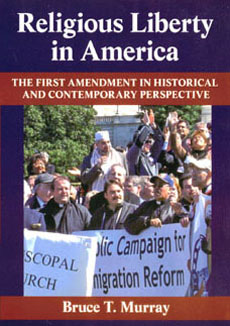{TITLE}, {COMPANY_NAME}
Religious Liberty in America is available in the Harvard University Law Library and Widener Library.
"A splendid presentation of the First Amendment" — Choice magazine
 |
|
Links
|
| Book surveys the Court’s First Amendment jurisprudence | ||||||||||||||||
Dear {GENDER} {LAST_NAME}: Judge Sonia Sotomayor is set to become the Supreme Court's newest member, making history as President Barack Obama's first appointee to the Court. The Senate is expected to confirm Sotomayor this week, following her testimony before the Senate Judiciary Committee last month. The confirmation hearings, charteristically, provided Senators an opportunity to posture for their constituents, but offered little insight into the prospective justice's legal processes and reasoning. 
The new University of Massachusetts Press book, Religious Liberty in America: The First Amendment in Historical and Contemporary Perspective by Bruce T. Murray, explores the Supreme Court’s evolution in its interpretation of the First Amendment for the past 200-plus years. The book places particular emphasis on the current configuration of the Court and provides analyses of its newest members, John Roberts and Sam Alito. Murray’s book further surveys the development of religious pluralism in America for the past 400 years – from early colonial times to present controversies, such as the mixing of religion and politics, battles over religious symbols in the public square, the “culture wars,” immigration and faith-based initiatives. Religious Liberty in America was selected by Choice – a publication of the Association of College and Research Libraries – as an “Outstanding Academic Book."
Religious Liberty in America is available at numerous university libraries, and it may be purchased from the University of Massachusetts Press. Read more about the author on SageLaw.
|

